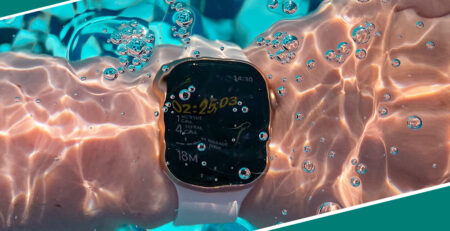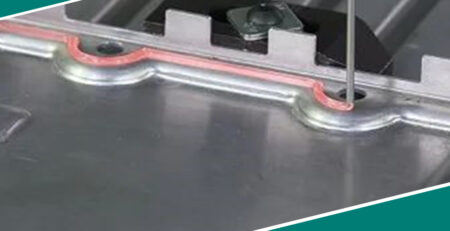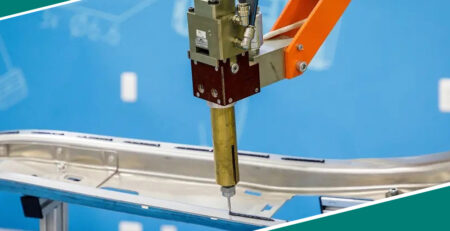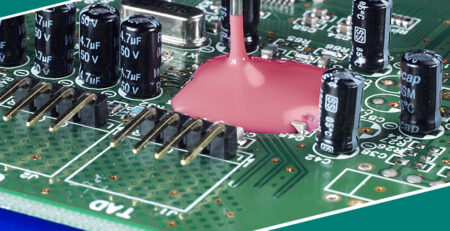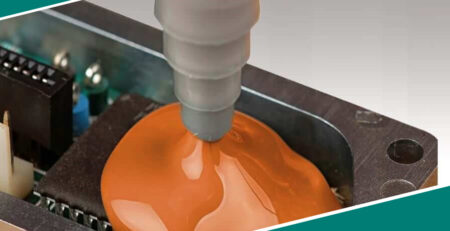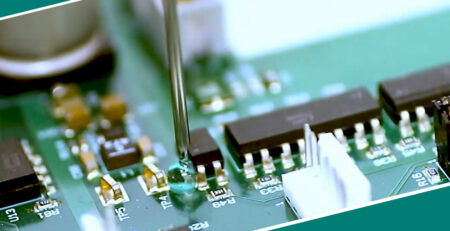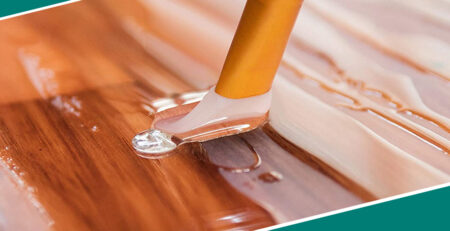Research on the Stability of the Insulation Performance of Conformal Coating Materials during Long-Term Use
Research on the Stability of the Insulation Performance of Conformal Coating Materials during Long-Term Use
As an important material for the protection of electronic circuits, conformal coatings can form a uniform and thin protective layer on the surface of printed circuit boards (PCBs) and their components. This protective layer can not only prevent environmental factors such as moisture, dust, and chemical substances from eroding electronic components but also play a significant role in insulation to a large extent. It ensures the electrical isolation between various components in electronic devices and improves the reliability and stability of the devices. However, whether the insulation performance of conformal coating materials can remain stable during long-term use is a question worthy of in-depth study. With the development of electronic devices towards miniaturization, high performance, and high reliability, the requirements for the stability of the insulation performance of conformal coatings are also getting higher and higher. Therefore, understanding the change laws and influencing factors of the insulation performance of conformal coatings during long-term use is of great significance for ensuring the normal operation of electronic devices.
Composition and Insulation Principle of Conformal Coatings
(1) Composition of Conformal Coatings
Conformal coatings materials usually consist of components such as polymer matrices, curing agents, and additives. The polymer matrix is the main component of conformal coatings, and common ones include acrylic resins, epoxy resins, and silicone resins. Different polymer matrices have different performance characteristics. For example, acrylic resins have good transparency and flexibility, epoxy resins have excellent adhesion and chemical resistance, and silicone resins have outstanding high-temperature resistance and electrical insulation performance. The role of the curing agent is to make the polymer matrix undergo a cross-linking reaction to form a protective layer with a certain hardness and strength. Additives include fillers, leveling agents, defoaming agents, etc., which can improve the construction performance and protective performance of the coating.
(2) Insulation Principle
The insulation performance of conformal coatings is mainly based on the molecular structure and chemical bond characteristics of their constituent materials. The molecular chains in the polymer matrix are intertwined with each other to form a continuous and dense protective layer. In this protective layer, the chemical bonds (such as covalent bonds) between molecules have a high bond energy, making it difficult for electrons to move freely between molecules. In addition, additives such as fillers in conformal coatings can further improve their insulation performance. For example, some inorganic fillers can fill the gaps between molecules and reduce the conduction paths of electrons. When an electronic device is powered on and operating, the conformal coating can prevent the current from flowing in an unintended path, thus achieving the purpose of electrical insulation.
Factors Affecting the Long-Term Stability of the Insulation Performance of Conformal Coatings
(1) Environmental Factors
- Humidity: Moisture is one of the important factors affecting the insulation performance of conformal coatings. When the environmental humidity is high, water molecules can penetrate into the protective layer of the conformal coating and interact with the polymer molecules. The presence of water molecules will reduce the intermolecular force, making it easier for electrons to move between molecules, thus resulting in a decrease in insulation resistance. When exposed to a high-humidity environment for a long time, it may also cause a hydrolysis reaction of the conformal coating, destroying the molecular structure of the polymer and further reducing its insulation performance.
- Temperature: Changes in temperature can have a significant impact on the insulation performance of conformal coatings. In a high-temperature environment, the thermal motion of polymer molecules intensifies, the distance between molecules increases, and the conduction ability of electrons is enhanced, resulting in a decrease in insulation resistance. In addition, high temperature may also accelerate the aging process of conformal coatings, causing changes in the degradation and cross-linking reactions of polymer molecules, which affects their insulation performance. In a low-temperature environment, the conformal coating may become brittle and hard, and cracks and damage are likely to occur, thus destroying the integrity of its insulation protective layer.
- Chemical Substances: Electronic devices may come into contact with various chemical substances during actual use, such as acids, alkalis, and salts. These chemical substances will react chemically with the conformal coating, erode the protective layer, and destroy its molecular structure. For example, acids can undergo a hydrolysis reaction with the ester bonds in epoxy resins, reducing the performance of the resin; alkalis can react with the silicon-oxygen bonds in silicone resins, leading to a deterioration of the insulation performance.
(2) Electrical Factors
- Electric Field Strength: When the conformal coating is under a high electric field strength, electrons may obtain enough energy to overcome the intermolecular binding and cause a breakdown phenomenon. Working under a high electric field strength for a long time will accelerate the decline of the insulation performance of the conformal coating and even lead to insulation failure. In addition, the uneven distribution of the electric field will also make the local electric field strength too high, increasing the risk of insulation breakdown.
- Corona Discharge: In high-voltage electrical equipment, when the electric field strength reaches a certain level, a corona discharge phenomenon will occur near the surface of the conductor. Corona discharge will generate high temperature, ozone, and ultraviolet rays, etc., and these factors will cause damage to the conformal coating. Ozone can react with polymer molecules, breaking the molecular chains; ultraviolet rays will initiate the photoaging reaction of the polymer, reducing its insulation performance.
(3) Mechanical Factors
- Vibration and Impact: Electronic devices may be affected by vibration and impact during operation, which will generate mechanical stress on the protective layer of the conformal coating. Long-term vibration and impact may cause cracks, peeling, and other phenomena in the conformal coating, destroying its insulation performance. Especially in some harsh working environments, such as the automotive, aerospace, and other fields, the influence of vibration and impact is more significant.
- Wear: In some special application scenarios, the conformal coating may be affected by wear, such as friction and scratching. Wear will gradually make the protective layer of the conformal coating thinner and reduce its insulation performance. For example, in electronic circuits near some moving parts, the conformal coating may be worn due to friction with the moving parts.
Test Methods for Evaluating the Stability of the Insulation Performance of Conformal Coatings
(1) Insulation Resistance Test
Insulation resistance is one of the important indicators for measuring the insulation performance of conformal coatings. By using an insulation resistance tester, the resistance value of the protective layer of the conformal coating is measured under a certain voltage. During the test, the test electrodes need to be in good contact with the surface of the conformal coating to ensure the accuracy of the measurement results. The higher the insulation resistance value, the better the insulation performance of the conformal coating. During long-term use, the insulation resistance test can be carried out regularly to observe its change trend and evaluate the stability of the insulation performance.
(2) Dielectric Constant and Dissipation Factor Test
The dielectric constant and dissipation factor are important parameters reflecting the insulation performance of conformal coatings under an alternating electric field. The dielectric constant represents the ability of the material to store electrical energy under the action of an electric field, and the dissipation factor represents the degree of electrical energy loss of the material under the action of an electric field. By using a dielectric constant tester and a dissipation factor tester, the dielectric constant and dissipation factor of the conformal coating at different frequencies can be measured. During long-term use, if the dielectric constant and dissipation factor change significantly, it indicates that the insulation performance of the conformal coating may have been affected.
(3) Breakdown Voltage Test
The breakdown voltage refers to the voltage value at which the conformal coating breaks down under the action of an electric field. By gradually increasing the voltage applied to the conformal coating until a breakdown phenomenon occurs, the voltage value recorded at this time is the breakdown voltage. The higher the breakdown voltage, the better the insulation performance of the conformal coating, and it can withstand a higher electric field strength. During long-term use, the breakdown voltage test can be carried out regularly to evaluate the stability of the insulation performance of the conformal coating under the action of an electric field.
(4) Damp Heat Aging Test
The damp heat aging test simulates the long-term use situation of the conformal coating in a high-humidity and high-temperature environment. The samples coated with the conformal coating are placed in a damp heat aging chamber, and the temperature and humidity conditions are controlled. After a certain period of aging, the insulation performance of the samples is tested. By comparing the insulation performance indicators before and after aging, the stability of the insulation performance of the conformal coating in a damp heat environment can be evaluated.
(5) Salt Spray Corrosion Test
The salt spray corrosion test simulates the corrosion situation of the conformal coating in an environment containing salt spray. The samples coated with the conformal coating are placed in a salt spray test chamber, and a salt spray solution of a certain concentration is sprayed. After a certain period of corrosion, the insulation performance test and appearance inspection of the samples are carried out. By observing the corrosion situation and insulation performance changes of the samples, the stability of the insulation performance of the conformal coating in a salt spray environment can be evaluated.
Experimental Cases and Data Analysis
(1) Experimental Design
In order to study the stability of the insulation performance of conformal coatings during long-term use, the following experiment was designed: Select three different types of conformal coatings (acrylic resin, epoxy resin, and silicone resin), and coat them on printed circuit boards respectively to prepare test samples. Divide the samples into three groups and carry out different accelerated aging experiments: The first group conducts a damp heat aging experiment, with the temperature set at 85°C and the humidity set at 85%, and the aging time is 1000 hours; the second group conducts a salt spray corrosion experiment, with the salt spray concentration of 5% and the corrosion time of 500 hours; the third group conducts a corona discharge experiment, with the electric field strength set at 10 kV/cm and the discharge time of 200 hours. During the experiment, the insulation resistance, dielectric constant, dissipation factor, and breakdown voltage of the samples are tested regularly.
(2) Experimental Results and Analysis
- Results of the Damp Heat Aging Experiment: After 1000 hours of damp heat aging, the insulation resistance of the three types of conformal coatings all decreased to different degrees. Among them, the insulation resistance of the acrylic resin conformal coating decreased most significantly, from the initial 10^12Ω to 10^9Ω; the insulation resistance of the epoxy resin conformal coating decreased to 10^10Ω; the insulation resistance of the silicone resin conformal coating decreased relatively less, to 10^11Ω. The dielectric constant and dissipation factor also increased to some extent, indicating that the damp heat environment has a great impact on the insulation performance of conformal coatings, and different types of conformal coatings are affected to different degrees.
- Results of the Salt Spray Corrosion Experiment: After the salt spray corrosion experiment, different degrees of corrosion phenomena appeared on the surfaces of the three types of conformal coatings. The corrosion of the acrylic resin conformal coating was the most serious, with obvious cracks and peeling on the surface; the corrosion of the epoxy resin conformal coating was relatively mild, but there were also some corrosion spots; the corrosion resistance of the silicone resin conformal coating was the best, with only slight corrosion marks on the surface. In terms of insulation performance, the insulation resistance of the acrylic resin conformal coating decreased to 10^8Ω, the epoxy resin conformal coating decreased to 10^9Ω, and the silicone resin conformal coating decreased to 10^10Ω.
- Results of the Corona Discharge Experiment: After the corona discharge experiment, the insulation performance of the three types of conformal coatings was affected to a certain extent. The breakdown voltage of the acrylic resin conformal coating decreased most significantly, from the initial 20 kV to 10 kV; the breakdown voltage of the epoxy resin conformal coating decreased to 15 kV; the breakdown voltage of the silicone resin conformal coating decreased to 18 kV. The dielectric constant and dissipation factor also increased to some extent, indicating that corona discharge will cause damage to the insulation performance of conformal coatings.
Measures to Improve the Long-Term Stability of the Insulation Performance of Conformal Coatings
(1) Reasonable Selection of Conformal Coatings
Select suitable types of conformal coatings according to the use environment and requirements of electronic devices. For example, in a high-humidity environment, conformal coatings with good moisture resistance, such as silicone resin or epoxy resin conformal coatings, should be selected; in an environment with a risk of chemical corrosion, conformal coatings with strong chemical resistance should be selected. At the same time, pay attention to the quality and performance indicators of conformal coatings, and select products that have passed strict testing and certification.
(2) Correct Construction Process
The construction process of conformal coatings has an important impact on their insulation performance and long-term stability. Before construction, ensure that the surface of the printed circuit board is clean, dry, and free of oil stains, dust, and other impurities. During the construction process, operate strictly in accordance with the instructions for use of the coating, and control the coating thickness and uniformity. After coating, carry out sufficient curing treatment to ensure that the coating forms a good protective layer.
(3) Effective Maintenance and Monitoring
Regularly maintain and inspect electronic devices, and observe whether there are cracks, peeling, corrosion, and other phenomena on the protective layer of the conformal coating. At the same time, conduct insulation performance tests regularly to detect changes in insulation performance in a timely manner. If it is found that the insulation performance of the conformal coating decreases or the protective layer is damaged, repair or re-coat it in a timely manner.
 Conclusion
Conclusion
The insulation performance of conformal coating materials will be affected by a variety of factors comprehensively during long-term use, including environmental factors, electrical factors, and mechanical factors. Different types of conformal coatings have different tolerance abilities to these factors, and there are also differences in the stability of their insulation performance during long-term use. Through reasonable selection of conformal coatings, correct construction processes, and effective maintenance and monitoring, the long-term stability of the insulation performance of conformal coatings can be improved to a certain extent, providing a guarantee for the reliable operation of electronic devices. However, with the continuous development of electronic technology, the requirements for the insulation performance of conformal coatings will also become higher and higher. In the future, it is necessary to conduct further in-depth research on the performance and application of conformal coatings to meet the continuous development needs of electronic devices. In practical applications, various factors should be comprehensively considered according to specific use scenarios and requirements, and suitable conformal coatings should be selected, and corresponding measures should be taken to ensure the long-term stability of their insulation performance.
For more about research on the stability of the insulation performance of conformal coating materials during long-term use, you can pay a visit to Deepmaterial at https://www.adhesivesmanufacturer.com/ for more info.



